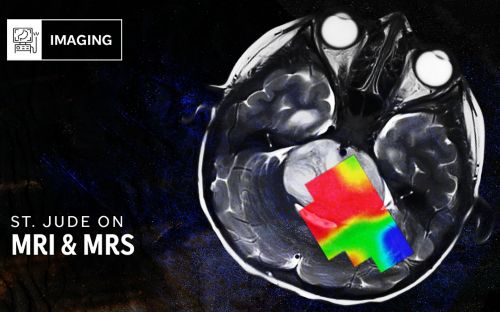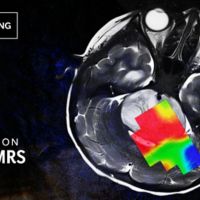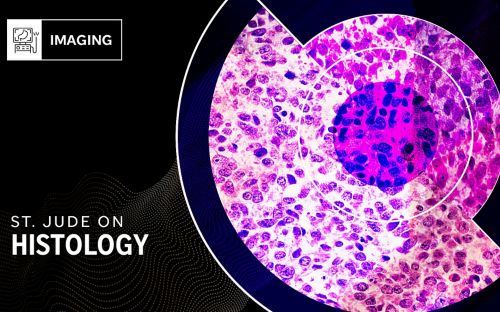Genetic predispositions can drive cancer but are not destiny for patients

A genetic predisposition can underlie many cancers, but scientists at St. Jude are at the forefront of understanding predisposition and using that knowledge to tailor treatment to each patient.
‘Why did I get cancer?’ ‘How bad will it be?’ ‘What will life be like after?’ These are haunting questions, especially when asked by a child. But they are a reality for the 15,000 children diagnosed with cancer in the United States each year, and many more throughout the world. Understanding genetics can help give patients and families some insight into these questions, providing a basis for making decisions about treatment and life after cancer.
St. Jude Children’s Research Hospital has shown that each patient’s germline (inherited) and somatic (cancer) genetics influence the risk and course of their disease, while also impacting the lives of pediatric cancer survivors as adults.
This St. Jude Genomes for Kids study, published in Cancer Discovery was able to quantify both hereditary risk and mutations in tumors affecting prognosis and treatment. About 86% of the patients tested had at least one clinically significant variation in tumor or germline DNA. The study further defined that 18% (almost 1 in 5) of children tested had a germline mutation in a cancer-predisposing gene.
“If I look back 25 years, when I first became interested in cancer predisposition,” said Kim Nichols, MD, St. Jude Division of Cancer Predisposition director and co-corresponding author of the Genomes for Kids study, “many doctors were reluctant to test children for germline predisposition because it was believed that there was nothing one could do about it. There was concern that such testing would only cause families to experience distress and anxiety. It has been really rewarding to see the transition in mindset over the last two decades, because now oncologists have come to appreciate that genetic predisposition contributes to a significant proportion of childhood cancers. In addition, it is becoming clearer and clearer that surveillance is going to help these patients.”
Historically, patients with the same cancer were treated the same way. The St. Jude group showed that every patient’s cancer is unique – which means that they need an individualized approach to treatment. Now, scientists are racing to understand how genetics predispose people to cancer. They also seek to prevent or predict the problems of disease, such as the side effects of treatment, the risk of relapse and the avoidance of therapies that may be ineffective for patients with certain genetic variants. In these investigations, researchers have found that genetics even impacts other diseases that arise later in life after cancer.
The field of cancer genetics promises to improve care for patients before, during and after treatment.
Why did I get cancer? – Understanding genetic predisposition
Imagine – your life is turned upside down in mere moments. You are a 17-year-old, approaching high school graduation, only to be sidelined by a cancer diagnosis. Despite being an active athlete, eating healthy and avoiding cancer risks like smoking, you learn that you have Hodgkin lymphoma. Reasonably, teenagers in this position ask, “why?”
Hodgkin lymphoma is a cancer that occurs most often in adolescents and young adults. It occurs sometimes, but not always, in families. Until recently, the reason for this was unclear – was there a lifestyle choice common to family members? Did the geographic location impact disease? No – the key is genetics. St. Jude researchers were able to use a unique cohort of patient families to find the specific genetic variants linked with increased risk of developing Hodgkin lymphoma, published in Blood.
“We’ve never been able to tell these families anything other than it’s just bad luck because nobody knew why more than one family member would develop Hodgkin lymphoma,” said co-first and co-corresponding author Jamie Flerlage, MD, St. Jude Department of Oncology. “We took on this study because understanding what is causing cancer in these families will help us to better counsel people about their chances of passing on genetic risk to their offspring, as well as help us identify novel targets that might potentially be used to create new treatments.”
The key to the study was the 36 patient family pedigrees the researchers assembled. Each contained two or more first-degrees relatives that had had Hodgkin lymphoma. The entire cohort then had their whole genomes sequenced.
The study found 33 coding and 11 non-coding genetic variants associated with people that had Hodgkin lymphoma. Several of the variants have been implicated in predisposition before, serving as a validation to the approach. In addition, the whole genome sequencing was sensitive enough to find several variants that were never previously linked with disease, such as those in the genes KDR and KLHDC8B. Some of the genes impacted included PAX5, GATA3, IRF7, EEF2KMT and POLR1E.
The discovery of novel genetic variants that predispose individuals is a formidable new tool in the journey to prevent and treat cancers. It was made possible through the powerful St. Jude bioinformatics pipeline, which includes more than 40 databases and other pieces of software, in addition to many purpose-built algorithms. Even with all these tools, genetic variants are only correlated with cancer development. More work is needed to determine how they connect to the disease.
How bad will it be? How predisposition and risk influence care
While a patient’s genetics can play a direct role in whether they get cancer – their genetics can also profoundly influence the course of their disease and responses to care.
Finding novel genetic variants predisposing patients to cancer is only the first step on the path to understanding its influence. Researchers build laboratory models to reveal the molecular mechanisms that fuel the disease, impacting how it progresses and responds to treatment. Once the mechanism is understood, models of a genetic predisposition to disease can be used to find new prevention and treatment strategies, improving outcomes for patients.
St. Jude is at the forefront of translating volumes of nuanced genetic data into meaningful cancer models. For example, researchers led by Jun J. Yang, PhD, St. Jude Departments of Pharmacy and Pharmaceutical Sciences and Oncology, recently showed a novel genetic variant increases the risk of developing a specific leukemia using an animal model of development.
Cancers often reactivate pathways from development in an aberrant way. One of the best models to study development is the zebrafish. The entire zebrafish genetic developmental cycle is known, allowing scientists to introduce gene variants and mutations to observe how they impact normal gene expression. Using the zebrafish, the researchers showed that a noncoding variant found in a large genetic screen of Philadelphia chromosome-like acute lymphoblastic leukemia (Ph-ALL) patients significantly altered gene expression.
Published in Nature Genetics, the research defined the mechanism involved, including specific local and global changes in chromatin, (the proteins associated with DNA that control gene expression), using a zebrafish model. These changes appear to activate an oncogene and promote cancer growth, offering a potential avenue for treatment. This work highlights the importance of understanding the biologic mechanisms underlying predisposition because there are clues in the biology about how the disease might be treated, and which vulnerabilities in the cancer might be exploited for future therapeutics.
A genetic understanding of predisposition can also give investigators insight into how to disrupt, stop or otherwise prevent cancers. At St. Jude, researchers are using genetics to try to prevent the most common childhood cancer: acute lymphoblastic leukemia (ALL). The most common form of ALL is B-cell ALL (B-ALL), and it is the leading cause of pediatric cancer deaths. Learning how to prevent B-ALL would be a game-changer in pediatric oncology.
In 2022, St. Jude researchers showed that treatment with a small molecule inhibitor prevented B-ALL in a mouse model predisposed to the disease, published in Cancer Research. This is the first time scientists have ever successfully prevented B-ALL in an animal model.
“I realize these are early days, but I cannot help getting excited about the findings,” said Nichols. “This is the first kernel of hope for a medical intervention to prevent hereditary forms of leukemia or other hereditary cancers in general.”
Around 3 – 5% of children with B-ALL are thought to develop the disease due to genetic predisposition. Among the responsible genes is one known as PAX5. The mouse model being studied had a heterozygous PAX5 mutation – one copy of the PAX5 gene was “knocked out”, while one copy was normal. Studies have shown that PAX5 heterozygosity can increase the dependence of immature lymphoid cells on a cytokine known as IL-7 for their survival. The drug ruxolitnib was able to block IL-7 signaling, which eliminated the majority of pre-leukemic cells. In so doing, the PAX5 heterozygous mice were prevented from getting leukemia. The research remains preliminary but is a first hopeful step towards prevention.
Model systems, like the zebrafish and mouse, are an important intermediate step in translating genetic findings to clinical care. Genetic variants identified in large scale sequencing projects are only correlated to disease. Models allow scientists to determine which mutations are detrimental and the mechanisms underlying disease development.
What will life be like after? The complex genetics of cancer survivors
Using the knowledge gained through ever-more powerful investigative tools, researchers and clinicians have developed more effective ways to treat pediatric cancers. Today, most children in the U.S. with cancer survive, and their journey has only begun.
Adult childhood cancer survivors are more vulnerable to chronic diseases than their healthy peers, especially those that occur in adults. It is as if some survivors’ bodies age biologically faster than their chronological age.
St. Jude researchers found that germline genetic variants contribute to this accelerated aging process – and identified ways that it may be slowed or prevented, published in Genome Medicine. They were able to do the analysis using data from the St. Jude Lifetime cohort study (St. Jude LIFE). St. Jude LIFE follows thousands of cancer survivors throughout their adult lives, giving them regular health screenings. Each survivor was a patient at St. Jude and had both their germline and somatic DNA subjected to whole genome sequencing.
The investigators combined the health and genetic information from St. Jude LIFE to find the genetic variants underlying age acceleration. They found that epigenetics, the regulatory elements of DNA that do not directly encode genes, was central to the process. Patients with ‘early’ onset chronic disease had epigenetic markers similar to people of a much older biological age. Therefore, epigenetic age acceleration appears to be the mechanism underlying the development of disease in these patients. That was known before the study, but researchers found the exact genetic variants responsible.
By identifying the genetic variants underlying epigenetic age acceleration, scientists hope to find ways to prevent its effect, and counsel the patients most at risk more effectively. As an example of identifying patients that are particularly vulnerable, using a similar approach, St. Jude researchers were able to find that survivors that have specific genetic variants are associated with a much higher risk of developing obesity (up to 53-fold) than others. That work was published in Nature Medicine.
The researchers hope that this genetic information, like the variants that predispose survivors to obesity, will one day become a standard part of care for survivors. Then physicians, patients and their families will be able to determine the most effective lifestyle strategies that may prevent chronic disease. In the case of obesity, physicians will be incentivized to provide more resources for promoting weigh maintenance through good nutrition and physical activity. Patients presented with this information will make more informed decisions about their lifestyles.
DNA is not destiny for cancer
Genetics determines if a child is predisposed to a disease, how a certain cancer is likely to manifest and the risk of other disease as a cancer survivor. However, DNA is not destiny. By understanding the molecular mechanisms underlying predispositions to disease, researchers are beginning to develop effective screening and prevention strategies. St. Jude remains at the forefront of caring for patients with hereditary cancer risk and carrying out genetic predisposition analyses. Together, clinicians and researchers will keep pushing the boundaries of genetics to provide novel mechanistic insights into the development, prevention and treatment of childhood cancers.






